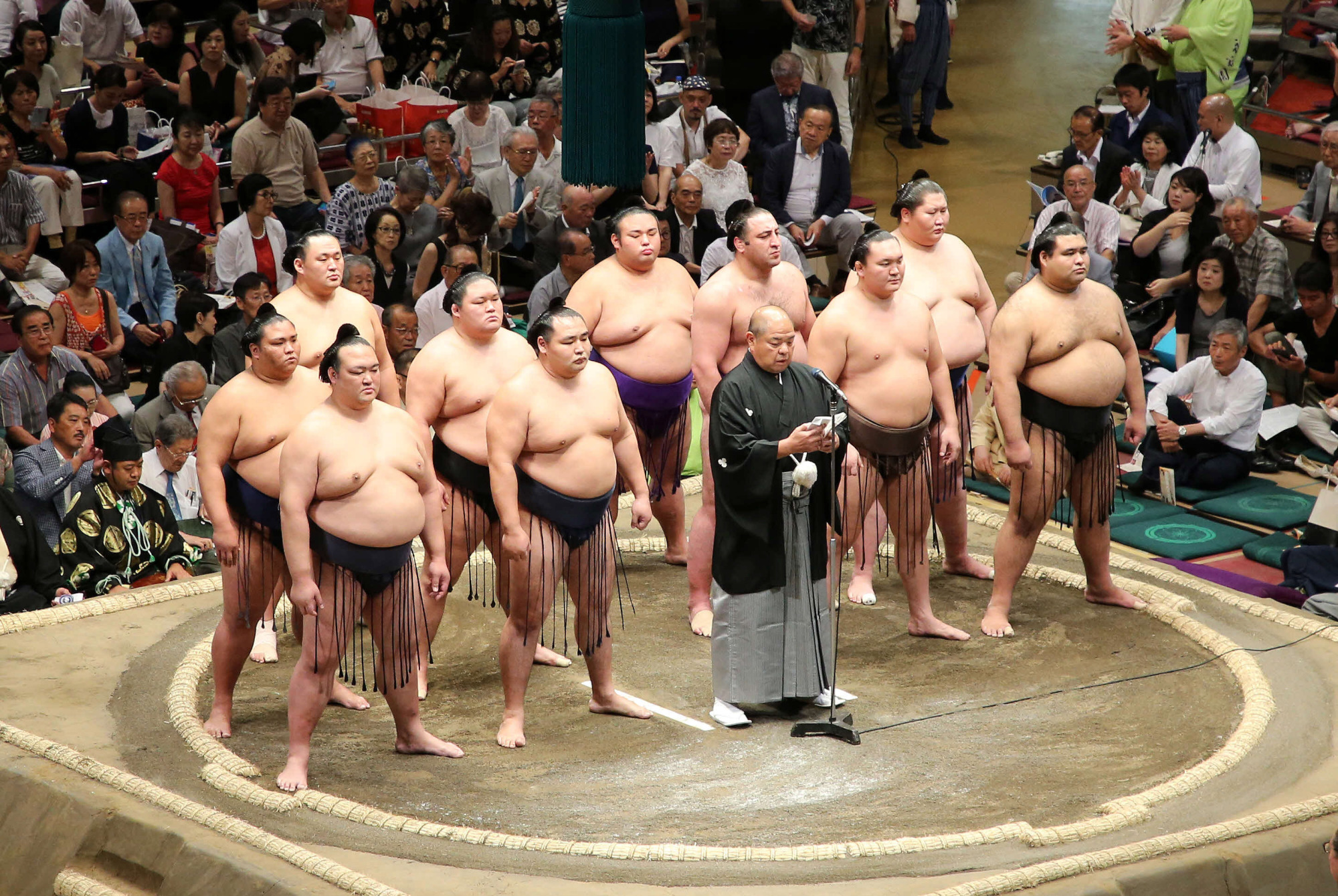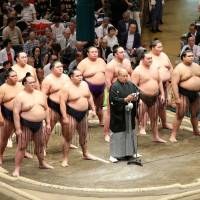Sumo tournaments take place on a raised ring called a dohyo. The kanji characters for dohyo (土俵) literally translate as clay and rice straw bales — the two materials the ring is made of.
Dohyo in professional sumo tournaments are consecrated ground. A ceremony called a dohyo-matsuri is performed the day before the meet starts. Those are free and open to the public. Sumo referees acting as Shinto priests bury items including rice, squid, salt and chestnuts in a small hole in the center of the ring.
The diameter of the ring was increased to 4.85 meters in late 1945, as it was felt that would appeal more to occupation forces, but after the wrestlers protested it was changed back to the previous (and current) 4.55 meters.
The offset bales on the four sides of the ring are a throwback to when sumo was mostly performed outdoors and they allowed rainwater to drain away.
The two white lines in the center of the ring are called shikirisen. They are repainted immediately following each day's action. The lines are quite slippery and many rikishi have lost bouts after stepping on them.
Slipping is also a hazard in Nagoya, where a combination of different clay, high humidity and poor air conditioning makes the ring surface much slicker than at other venues.
Nagoya is also unique in that fans literally storm the ring and tear it to pieces after the final day's action. The clay is bagged up and brought home but a piece of straw bale is considered the best souvenir.
Things are much more civilized in Tokyo, where there is no need to dismantle the dohyo. When the Kokugikan hosts non-sumo events, the ring disappears into a special underground chamber.


















With your current subscription plan you can comment on stories. However, before writing your first comment, please create a display name in the Profile section of your subscriber account page.